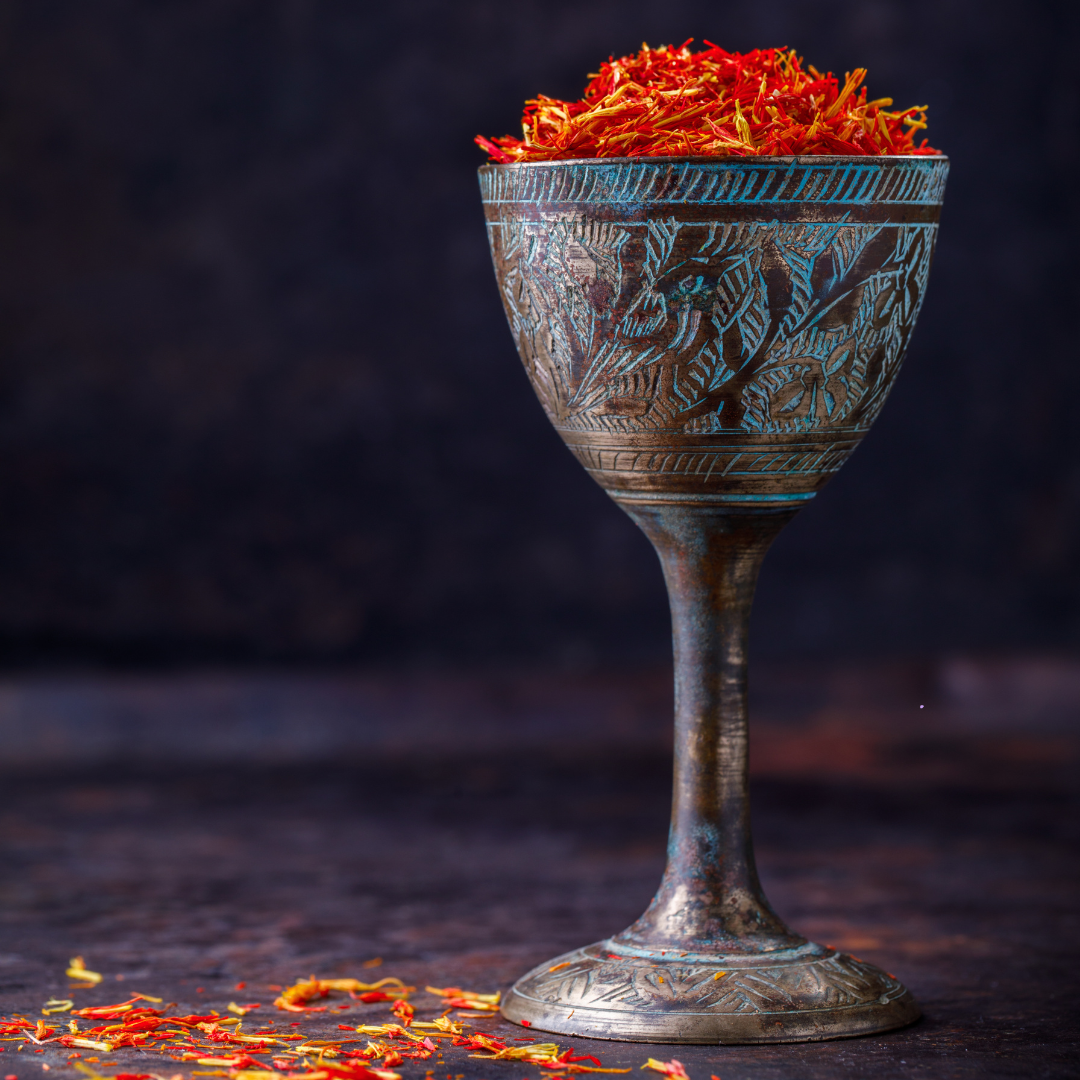The World’s Most Precious Spice
Saffron, derived from the Crocus sativus flower, is one of the world’s most esteemed and expensive spices. Renowned for its vibrant colour, distinct flavour, and medicinal properties, saffron’s history spans millennia.

Saffron’s history can be traced back over 3,500 years, with its earliest recorded use in ancient civilisations such as Mesopotamia and Persia. Archaeological evidence suggests that saffron was initially valued for its medicinal properties, being used in treatments for a variety of ailments. The spice was also revered for its vibrant dye and its inclusion in ritualistic practices. While saffron is believed to have originated in the region of present-day Iran, it was simultaneously cultivated in other areas, notably in the Aegean, particularly on the island of Crete, where the ancient Minoans used it extensively, as depicted in their art and frescoes.
Saffron’s appeal quickly spread beyond its place of origin. By the time of ancient Greece and Rome, it was well integrated into the medicinal, culinary, and religious practices of these civilisations. In Greece, saffron was associated with healing, and in Rome, it was used in perfumes, dyes, and even in public baths to scent the water. Roman texts often praised saffron for its aromatic qualities and purported health benefits.
Saffron also likely played a role in ancient Egyptian culture, where it was used as a dye and possibly in medicinal preparations. Cleopatra is famously said to have used saffron in her baths, believing it would enhance her beauty and allure, though this story is more part of popular legend than verified history.
Saffron’s cultivation spread across the Eurasian continent, reaching India, where it became a staple in the region’s rich culinary and medicinal traditions. There is evidence that saffron was present in India well before the time of Alexander the Great, though his campaigns may have facilitated cultural exchanges that further integrated the spice into various traditions. Alexander’s soldiers are said to have brought saffron back to Macedonia, where it became a luxury item in both culinary and medicinal contexts.
The spice’s journey across Europe was further accelerated by the Roman Empire, where it became a symbol of wealth and luxury. Following the fall of Rome, saffron cultivation in Europe experienced periods of decline, only to be revived later through trade and cultural exchanges, particularly during the Crusades.

During the Middle Ages, saffron became increasingly popular in Europe, especially in France, Spain, and Italy. In France, saffron cultivation re-emerged around the 8th century, influenced in part by the agricultural practices of the Moors, who had established themselves in southern Spain and parts of France. However, it was not until the 12th century that saffron cultivation became more widespread in France, largely due to the returning Crusaders who introduced knowledge of Eastern agriculture and spices.
Regions such as Quercy, Vaucluse, and Périgord in France became significant centres for saffron production. The spice also gained a strong foothold in Spain, where it remains a vital ingredient in traditional dishes like paella. Spain, particularly the region of La Mancha, emerged as one of the world’s leading producers of saffron, a status it continues to hold today.
Today, saffron remains one of the most valuable spices in the world. Iran is the leading producer, accounting for approximately 90% of global production. Its unique flavour, aroma, and vibrant colour make saffron a treasured ingredient in a variety of cuisines, from Persian and Indian to Mediterranean and European dishes.
Beyond its culinary uses, saffron is also valued for its medicinal properties. Modern research has validated some of the ancient claims about its health benefits, including its potential as an antioxidant and its role in treating mild depression.
Saffron’s rich history highlights its enduring appeal and versatility. From its origins in ancient Persia to its global spread, saffron has been cherished for thousands of years. Its significance in medicine, cuisine, and culture has established it as a symbol of luxury and tradition. Today, saffron continues to be a highly sought-after spice, appreciated for its ability to enhance dishes and its deep-rooted connection to human history.





